Sellaphora blackfordensis
David G. MannIntroduction
Sellaphora blackfordensis was described formally by D.G. Mann & S. Droop in Mann et al. (2004), after having been referred to previously in several papers as phenodeme 3 (Mann 1984) or the 'rectangular' deme of the morphospecies S. pupula sensu lato (e.g. Mann 1999, Mann et al. 1999). Sellaphora blackfordensis is named after the small urban pool (Blackford Pond) in Edinburgh where it was first found. It seems to be common in the epipelon of muds that are rich in organic matter, in eutrophic lakes and ditches.
Characteristics
- Valves linear-elliptical, with broad, subcapitate poles (becoming rostrate in the smallest specimens); robust
- Dimensions: 19–57 µm × 8.0–9.75 µm (longest valves rarely seen in natural populations)
- Striae radiate, curved, with some intercalated short striae at the centre, 17.8–19.6–20.7 in 10 µm
- Areolae invisible in LM
- Axial area narrow
- Central area expanded (to c. 55–65% of the valve width), somewhat irregular, mostly bow-tie–shaped or transversely rectangular
- Raphe-sternum often well-defined in LM, through development of slight grooves alongside it externally
- Conopeum absent
- Raphe sinuous
- Central external raphe endings expanded, turned towards the primary side
- Terminal fissures doubly inflected, turned towards the secondary side
- Polar bars present, radiate or more rarely parallel
- Allogamous (mating system complex)
Type Data
DNA Barcode (cox1): GenBank EF164948.
Holotype: specimen at England Finder S39/4 (bottom and right-hand edges of the finder co-located with the top and left-hand edges of the the specimen slide, when the label is to the left) on slide E16/4 "Blackford Pond, Dec. '83, mud (tissue)" in the herbarium of the Royal Botanic Garden Edinburgh (E). Holotype valve can be viewed on-line at http://rbg-web2.rbge.org.uk/algae/research/types/Sellaphora_blackfordensis_type.html
Similar Species
Many Sellaphora species have a linear-elliptical outline and broad subcapitate poles; Evans et al. (2007, 2008) and Mann et al. (2008) illustrate several species visually very similar to S. blackfordensis. Careful measurements of valve width and striation density can help to achieve a reasonably certain identification in LM, but for critical work confirmation should be made by DNA barcoding (Evans et al. 2007).
Ecology
Found so far only in the epipelon of eutrophic lakes, ponds and ditches. A preliminary ecological analysis of some British Sellaphora species has been carried out by Poulíčková et al. (2008)
Geographical Distribution
Distributional data are difficult to obtain, because the species is easily confused with other Sellaphora species. Barcode confirmations are available for several Scottish and English lakes.
References
Evans, K.M., Wortley, A.H. & Mann, D.G. (2007). An assessment of potential diatom “barcode” genes (cox1, rbcL, 18S and ITS rDNA) and their effectiveness in determining relationships in Sellaphora (Bacillariophyta). Protist 158: 349–364.
Evans, K.M., Wortley, A.H., Simpson, G.E., Chepurnov, V.A. & Mann, D.G. (2008). A molecular systematic approach to explore diversity within the Sellaphora pupula species complex (Bacillariophyta). Journal of Phycology 44: 215–231
Mann, D.G. (1984). Observations on copulation in Navicula pupula and Amphora ovalis in relation to the nature of diatom species. Annals of Botany, 54, 429-438.
Mann, D.G. (1988). The nature of diatom species: analysis of sympatric populations. In F.E. Round (ed.) Proceedings of the 9th International Diatom Symposium, 317-327. Biopress, Bristol and Koeltz Scientific Books, Koenigstein.
Mann, D.G. (1989). The species concept in diatoms: evidence for morphologically distinct, sympatric gamodemes in four epipelic species. Plant Systematics and Evolution, 164, 215 237.
Mann, D.G. (1989). The diatom genus Sellaphora: separation from Navicula. British Phycological Journal, 24, 1-20.
Mann, D.G. (1999). The species concept in diatoms (Phycological Reviews 18). Phycologia, 38: 437-495.
Mann, D.G., Chepurnov, V.A. & Droop, S.J.M. (1999). Sexuality, incompatibility, size variation, and preferential polyandry in natural populations and clones of Sellaphora pupula (Bacillariophyceae). Journal of Phycology, 35, 152-170.
Mann, D.G., McDonald, S.M., Bayer, M.M., Droop, S.J.M., Chepurnov, V.A., Loke, R.E., Ciobanu, A. & du Buf, J.M.H. (2004) Morphometric analysis, ultrastructure and mating data provide evidence for five new species of Sellaphora (Bacillariophyceae). Phycologia 43: 459-482.
Mann, D.G., Thomas, S.J. & Evans, K.M. (2008). Revision of the diatom genus Sellaphora: a first account of the larger species in the British Isles. Fottea 8: 15–78.
Poulíčková, A., Špačková, J., Kelly, M.G., Duchoslav, M. & Mann, D.G. (2008). Ecological variation within Sellaphora species complexes (Bacillariophyceae) – specialists or generalists? Hydrobiologia
Title Illustrations

| Scientific Name | Sellaphora blackfordensis |
|---|---|
| Comments | if printed out without change in pixel dimensions at 300 dpi, the full-size image will provide a x2000 image |
| Specimen Condition | Dead Specimen |
| Identified By | David G. Mann |
| Life Cycle Stage | vegetative phase, stages in size reduction |
| Body Part | valves |
| View | valve view |
| Size | 10 µm scale bar included |
| Image Use |
 This media file is licensed under the Creative Commons Attribution-NonCommercial License - Version 3.0. This media file is licensed under the Creative Commons Attribution-NonCommercial License - Version 3.0.
|
| Copyright |
© 2008 David G. Mann

|
| Scientific Name | Sellaphora blackfordensis |
|---|---|
| Specimen Condition | Live Specimen |
| Identified By | David G. Mann |
| Life Cycle Stage | vegetative phase |
| Body Part | single cell |
| View | valve view, focused near epivalve |
| Image Use |
 This media file is licensed under the Creative Commons Attribution-NonCommercial License - Version 3.0. This media file is licensed under the Creative Commons Attribution-NonCommercial License - Version 3.0.
|
| Copyright |
© 2008 David G. Mann

|
| Scientific Name | Sellaphora blackfordensis |
|---|---|
| Acknowledgements | from an original image used also to produce fig. 35 of Mann et al. 2004, Phycologia 43: 459-482 |
| Specimen Condition | Dead Specimen |
| Identified By | David G. Mann |
| Life Cycle Stage | vegetative phase |
| Body Part | valve |
| View | external, valve end |
| Size | scale bar = 2 µm |
| Image Use |
 This media file is licensed under the Creative Commons Attribution-NonCommercial License - Version 3.0. This media file is licensed under the Creative Commons Attribution-NonCommercial License - Version 3.0.
|
| Copyright |
© 2008 David G. Mann

|
About This Page
This page is being developed as part of the Tree of Life Web Project Protist Diversity Workshop, co-sponsored by the Canadian Institute for Advanced Research (CIFAR) program in Integrated Microbial Biodiversity and the Tula Foundation.
David G. Mann

Royal Botanic Garden Edinburgh, United Kingdom
Correspondence regarding this page should be directed to David G. Mann at
Page copyright © 2008 David G. Mann
 Page: Tree of Life
Sellaphora blackfordensis .
Authored by
David G. Mann.
The TEXT of this page is licensed under the
Creative Commons Attribution-NonCommercial License - Version 3.0. Note that images and other media
featured on this page are each governed by their own license, and they may or may not be available
for reuse. Click on an image or a media link to access the media data window, which provides the
relevant licensing information. For the general terms and conditions of ToL material reuse and
redistribution, please see the Tree of Life Copyright
Policies.
Page: Tree of Life
Sellaphora blackfordensis .
Authored by
David G. Mann.
The TEXT of this page is licensed under the
Creative Commons Attribution-NonCommercial License - Version 3.0. Note that images and other media
featured on this page are each governed by their own license, and they may or may not be available
for reuse. Click on an image or a media link to access the media data window, which provides the
relevant licensing information. For the general terms and conditions of ToL material reuse and
redistribution, please see the Tree of Life Copyright
Policies.
- First online 07 February 2010
Citing this page:
Mann, David G. 2010. Sellaphora blackfordensis . Version 07 February 2010 (under construction). http://tolweb.org/Sellaphora_blackfordensis/129681/2010.02.07 in The Tree of Life Web Project, http://tolweb.org/




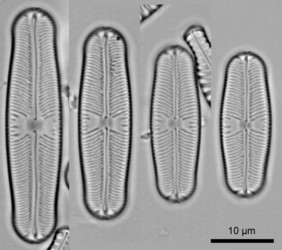
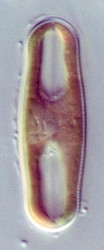
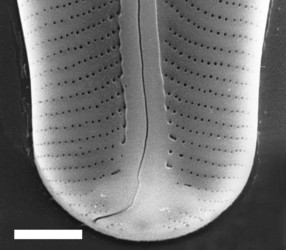
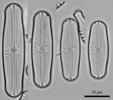

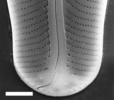


 Go to quick links
Go to quick search
Go to navigation for this section of the ToL site
Go to detailed links for the ToL site
Go to quick links
Go to quick search
Go to navigation for this section of the ToL site
Go to detailed links for the ToL site